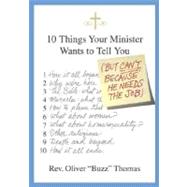
| Acknowledgments | p. ix |
| Author's Note | p. xiii |
| Preface | p. xv |
| How Did It All Begin? | p. 1 |
| Why Are We Here? | p. 11 |
| What Is the Bible? | p. 21 |
| Is There Really Such a Thing As a Miracle? | p. 35 |
| How Do I Please God? | p. 43 |
| What About Women? | p. 57 |
| What About Homosexuality? | p. 67 |
| What About Other Faiths? | p. 77 |
| What Happens After We Die? | p. 85 |
| How Will It All End? | p. 95 |
| Epilogue: So What? | p. 105 |
| Table of Contents provided by Ingram. All Rights Reserved. |
The New copy of this book will include any supplemental materials advertised. Please check the title of the book to determine if it should include any access cards, study guides, lab manuals, CDs, etc.
The Used, Rental and eBook copies of this book are not guaranteed to include any supplemental materials. Typically, only the book itself is included. This is true even if the title states it includes any access cards, study guides, lab manuals, CDs, etc.
Excerpted from 10 Things Your Minister Wants to Tell You: But Can't, Because He Needs the Job by Oliver Thomas
All rights reserved by the original copyright owners. Excerpts are provided for display purposes only and may not be reproduced, reprinted or distributed without the written permission of the publisher.